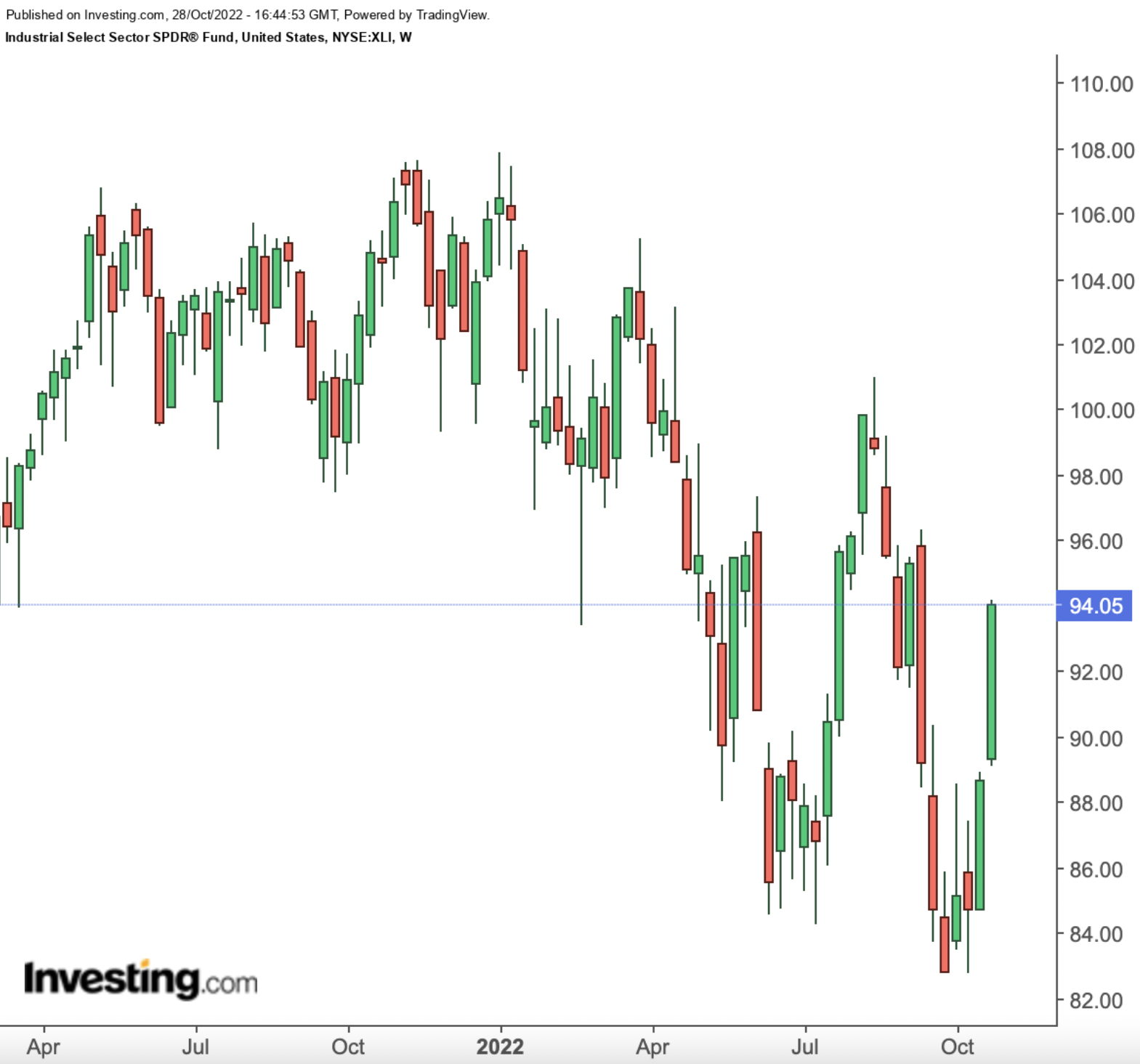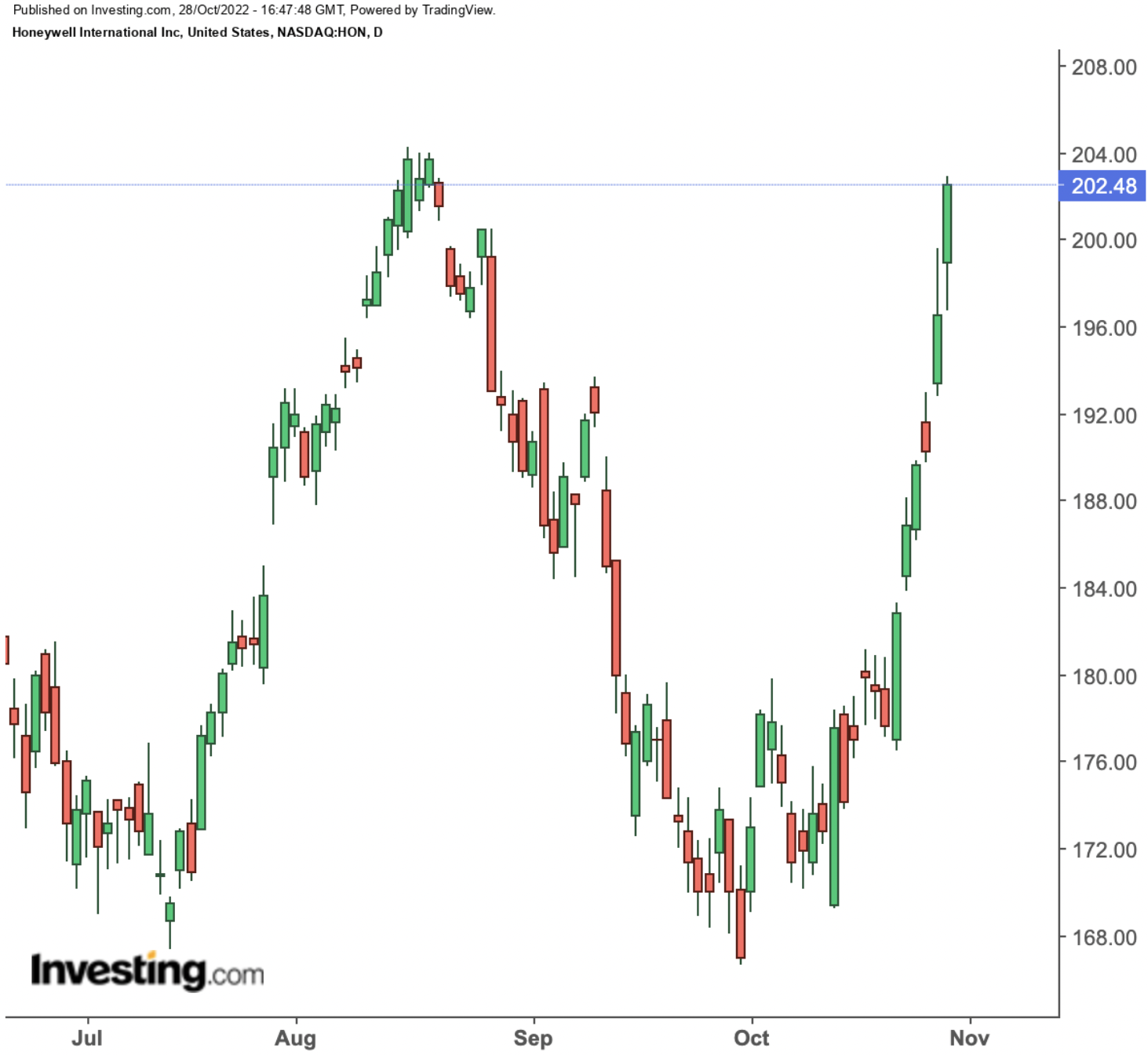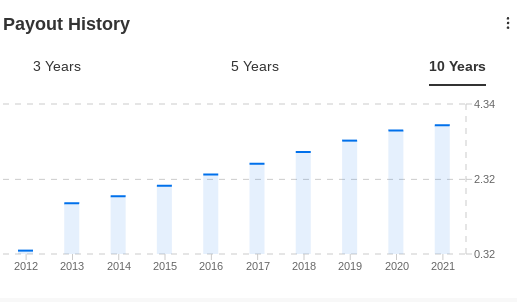
- Industrial stocks have comfortably outperformed the broader market this year amid concerns about slowing demand
- Strong earnings from industrial companies signal that they may continue to outperform even in a potential recession
- Honeywell remains in a solid position to take advantage of its exposure to different sectors of the economy
As investors focus on the current bloodbath in technology, some industrial sector earnings suggest that traditional economy companies are chugging along just fine despite cost pressures and labor shortages.
Caterpillar (NYSE:), the bellwether industrial giant best known for its yellow bulldozers and diggers, reported better-than-expected yesterday as higher machine shipments and increased prices across its end markets boosted profits for the third quarter.
Similarly, Honeywell International (NASDAQ:), another global industrial giant, beat expectations for Q3, citing strong growth in advanced materials, commercial aerospace, and building products businesses.
Strong earnings from industries like manufacturing, construction, and oil and gas extraction signal that such sectors may be performing better in a scenario when the Federal Reserve’s monetary tightening campaign pushes the economy into a likely recession.
Industrial stocks, represented by the Industrial Select Sector SPDR Fund (NYSE:), have comfortably outperformed the broader market, falling 12% this year compared with 30% losses for the tech-heavy .

It’s hard to predict how these companies will fare if the economy slips into a deep recession, causing a widespread slowdown in demand. But so far, there is no indication of such a scenario playing out.
Over the past 12 months, goods producers have added almost 800,000 jobs, which prior to the pandemic hadn’t happened since the early 1980s.
A Winner In A Winning Sector
If you want to play to the strength of the industrial economy, my favorite pick in this sector is Honeywell which manufactures products crucial to everyday life. Its diversified portfolio provides a lifeline to many industries, including homes and buildings, aviation, defense and space, oil and gas, chemicals, and automotive.
The stock is down only 2.9% amid this year’s bear market.

The company’s competitive advantage is so significant that it’s hard to challenge its dominance. The recent global health crisis was a good example that showed the strength of the diversified portfolio of the Charlotte, North Carolina-based industrial giant.
Furthermore, the company’s latest earnings clearly showed that HON remains in a solid position to take advantage of its exposure to different sectors of the economy. HON’s end market mix includes aerospace (33% of revenue) and oil & gas (12%)—the two areas of the industrial economy which I believe will continue to do well due to strong pent-up demand in the post-pandemic world.
Honeywell also highlighted this strength in its earnings statement yesterday:
“Our backlog remains near record levels, closing the third quarter at $29.1 billion, up 9% year over year, and providing us with confidence in our demand expectations against an increasingly uncertain macroeconomic backdrop.”
In his fourth year as the CEO, Darius Adamczyk is trying to transform the 136-year industrial giant into an enterprise with a start-up culture. Since taking over at the company’s helm, he has introduced more software-based products to help clients better manage their supply chains.
For long-term investors, HON also offers an attractive opportunity for income growth. The company pays $1.03 a share quarterly payout, which has grown over 11% per year during the past decade. Honeywell has paid uninterrupted dividends for over two decades while maintaining a low payout ratio of 53%.

HON Payout History
Source: InvestingPro
Bottom Line
Honeywell’s powerful combination of growth momentum, low payout ratio, and diversified portfolio signals that the company is safe and well-positioned to reward its long-term investors even during a probable recession. Moreover, its stock offers an excellent opportunity to take advantage of the economy’s industrial strength.
Disclosure: At the time of writing, the author did not own stocks mentioned in this article. The views expressed in this article are solely the author’s opinion and should not be taken as investment advice.






